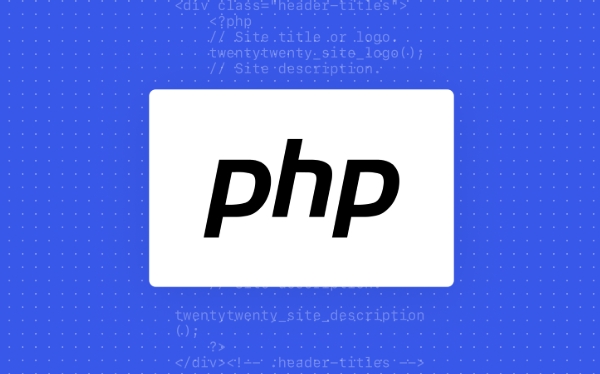php array remove duplicates from multidimensional array
Jul 09, 2025 am 12:28 AMWhen dealing with PHP multi-dimensional array deduplication, you cannot use array_unique directly, and other methods are required. 1. Use serialize and unserialize to combine array_map to serialize the sub-array into a string and then deduplicate it, and then restore it to an array, which is suitable for two-dimensional arrays; 2. Customize the comparison function arrayUnique, which manually compares each element through traversal, which is highly flexible but less efficient; 3. Note that the key names and order will affect the uniqueness judgment, and it is recommended to unify the structure or compare according to specific fields; 4. If deduplicate based on a certain field (such as id), you can use a temporary array to record the existing field values, and only the items that appear for the first time are retained. The selection method should be determined based on the data structure and performance requirements.

To deal with the problem of deduplication of PHP multi-dimensional arrays, it is actually not possible to solve the problem of using array_unique like one-dimensional arrays. Because elements of multidimensional arrays may be arrays, PHP default functions do not support comparisons of nested structures. However, as long as you master the correct method, it can still be achieved.

1. Use serialize and unserialize to cooperate with array_map
This is one of the most common solutions. The core idea is to first "serialize" each subarray into a string, so that you can compare it with array_unique .

$uniqueArray = array_map('unserialize', array_unique(array_map('serialize', $originalArray)));
-
serialize: converts each subarray into a string for easy comparison. -
array_unique: Remove duplicate strings. -
unserialize: Return to the array structure.
This method is suitable for two-dimensional arrays. If your array is deeper, it may require recursive processing.
2. Custom comparison function: use us_array_unique (manual traversal)
If you want to control the comparison method more flexibly, or if you want to support more complex structures, you can write a function yourself to compare one by one:

function arrayUnique($array) {
$result = [];
foreach ($array as $item) {
$found = false;
foreach ($result as $existing) {
if ($item === $existing) {
$found = true;
break;
}
}
if (!$found) {
$result[] = $item;
}
}
return $result;
}Although this method is not as efficient as built-in functions, it is better to be intuitive and controllable. For example, you can make unique judgments based on a certain field instead of exactly matching the entire subarray.
3. Note: Key names and order will also affect uniqueness judgment
What many people ignore is that even if the content of the two subarrays is the same, but the key names or orders are different, they will be regarded as different arrays . For example:
['a' => 1, 'b' => 2] !== ['b' => 2, 'a' => 1]
Therefore, before deduplication, it is best to unify the structure of the array, such as sorting first and then comparing, or only comparing specific fields.
4. What if you just deduplicate based on a certain field?
Sometimes you don't want to compare the entire line, but just want to keep unique items based on a certain field (such as id). This can be done at this time:
$ids = [];
$result = [];
foreach ($originalArray as $item) {
if (!in_array($item['id'], $ids)) {
$result[] = $item;
$ids[] = $item['id'];
}
}This method is especially suitable for deduplication by pressing the primary key from the data read from the database.
Basically these common methods. Which one you choose depends on your data structure and performance requirements. If it is a small amount of data, you can choose any one of them. If the array is large or the structure is complex, it is recommended to give priority to high-efficiency methods.
The above is the detailed content of php array remove duplicates from multidimensional array. For more information, please follow other related articles on the PHP Chinese website!

Hot AI Tools

Undress AI Tool
Undress images for free

Undresser.AI Undress
AI-powered app for creating realistic nude photos

AI Clothes Remover
Online AI tool for removing clothes from photos.

Clothoff.io
AI clothes remover

Video Face Swap
Swap faces in any video effortlessly with our completely free AI face swap tool!

Hot Article

Hot Tools

Notepad++7.3.1
Easy-to-use and free code editor

SublimeText3 Chinese version
Chinese version, very easy to use

Zend Studio 13.0.1
Powerful PHP integrated development environment

Dreamweaver CS6
Visual web development tools

SublimeText3 Mac version
God-level code editing software (SublimeText3)

Hot Topics
 What are some best practices for versioning a PHP-based API?
Jun 14, 2025 am 12:27 AM
What are some best practices for versioning a PHP-based API?
Jun 14, 2025 am 12:27 AM
ToversionaPHP-basedAPIeffectively,useURL-basedversioningforclarityandeaseofrouting,separateversionedcodetoavoidconflicts,deprecateoldversionswithclearcommunication,andconsidercustomheadersonlywhennecessary.StartbyplacingtheversionintheURL(e.g.,/api/v
 How do I implement authentication and authorization in PHP?
Jun 20, 2025 am 01:03 AM
How do I implement authentication and authorization in PHP?
Jun 20, 2025 am 01:03 AM
TosecurelyhandleauthenticationandauthorizationinPHP,followthesesteps:1.Alwayshashpasswordswithpassword_hash()andverifyusingpassword_verify(),usepreparedstatementstopreventSQLinjection,andstoreuserdatain$_SESSIONafterlogin.2.Implementrole-basedaccessc
 What are the differences between procedural and object-oriented programming paradigms in PHP?
Jun 14, 2025 am 12:25 AM
What are the differences between procedural and object-oriented programming paradigms in PHP?
Jun 14, 2025 am 12:25 AM
Proceduralandobject-orientedprogramming(OOP)inPHPdiffersignificantlyinstructure,reusability,anddatahandling.1.Proceduralprogrammingusesfunctionsorganizedsequentially,suitableforsmallscripts.2.OOPorganizescodeintoclassesandobjects,modelingreal-worlden
 What are weak references (WeakMap) in PHP, and when might they be useful?
Jun 14, 2025 am 12:25 AM
What are weak references (WeakMap) in PHP, and when might they be useful?
Jun 14, 2025 am 12:25 AM
PHPdoesnothaveabuilt-inWeakMapbutoffersWeakReferenceforsimilarfunctionality.1.WeakReferenceallowsholdingreferenceswithoutpreventinggarbagecollection.2.Itisusefulforcaching,eventlisteners,andmetadatawithoutaffectingobjectlifecycles.3.YoucansimulateaWe
 How can you handle file uploads securely in PHP?
Jun 19, 2025 am 01:05 AM
How can you handle file uploads securely in PHP?
Jun 19, 2025 am 01:05 AM
To safely handle file uploads in PHP, the core is to verify file types, rename files, and restrict permissions. 1. Use finfo_file() to check the real MIME type, and only specific types such as image/jpeg are allowed; 2. Use uniqid() to generate random file names and store them in non-Web root directory; 3. Limit file size through php.ini and HTML forms, and set directory permissions to 0755; 4. Use ClamAV to scan malware to enhance security. These steps effectively prevent security vulnerabilities and ensure that the file upload process is safe and reliable.
 What are the differences between == (loose comparison) and === (strict comparison) in PHP?
Jun 19, 2025 am 01:07 AM
What are the differences between == (loose comparison) and === (strict comparison) in PHP?
Jun 19, 2025 am 01:07 AM
In PHP, the main difference between == and == is the strictness of type checking. ==Type conversion will be performed before comparison, for example, 5=="5" returns true, and ===Request that the value and type are the same before true will be returned, for example, 5==="5" returns false. In usage scenarios, === is more secure and should be used first, and == is only used when type conversion is required.
 How can you interact with NoSQL databases (e.g., MongoDB, Redis) from PHP?
Jun 19, 2025 am 01:07 AM
How can you interact with NoSQL databases (e.g., MongoDB, Redis) from PHP?
Jun 19, 2025 am 01:07 AM
Yes, PHP can interact with NoSQL databases like MongoDB and Redis through specific extensions or libraries. First, use the MongoDBPHP driver (installed through PECL or Composer) to create client instances and operate databases and collections, supporting insertion, query, aggregation and other operations; second, use the Predis library or phpredis extension to connect to Redis, perform key-value settings and acquisitions, and recommend phpredis for high-performance scenarios, while Predis is convenient for rapid deployment; both are suitable for production environments and are well-documented.
 How do I perform arithmetic operations in PHP ( , -, *, /, %)?
Jun 19, 2025 pm 05:13 PM
How do I perform arithmetic operations in PHP ( , -, *, /, %)?
Jun 19, 2025 pm 05:13 PM
The methods of using basic mathematical operations in PHP are as follows: 1. Addition signs support integers and floating-point numbers, and can also be used for variables. String numbers will be automatically converted but not recommended to dependencies; 2. Subtraction signs use - signs, variables are the same, and type conversion is also applicable; 3. Multiplication signs use * signs, which are suitable for numbers and similar strings; 4. Division uses / signs, which need to avoid dividing by zero, and note that the result may be floating-point numbers; 5. Taking the modulus signs can be used to judge odd and even numbers, and when processing negative numbers, the remainder signs are consistent with the dividend. The key to using these operators correctly is to ensure that the data types are clear and the boundary situation is handled well.






